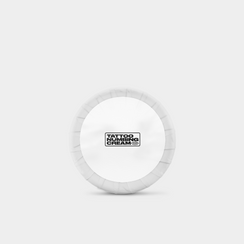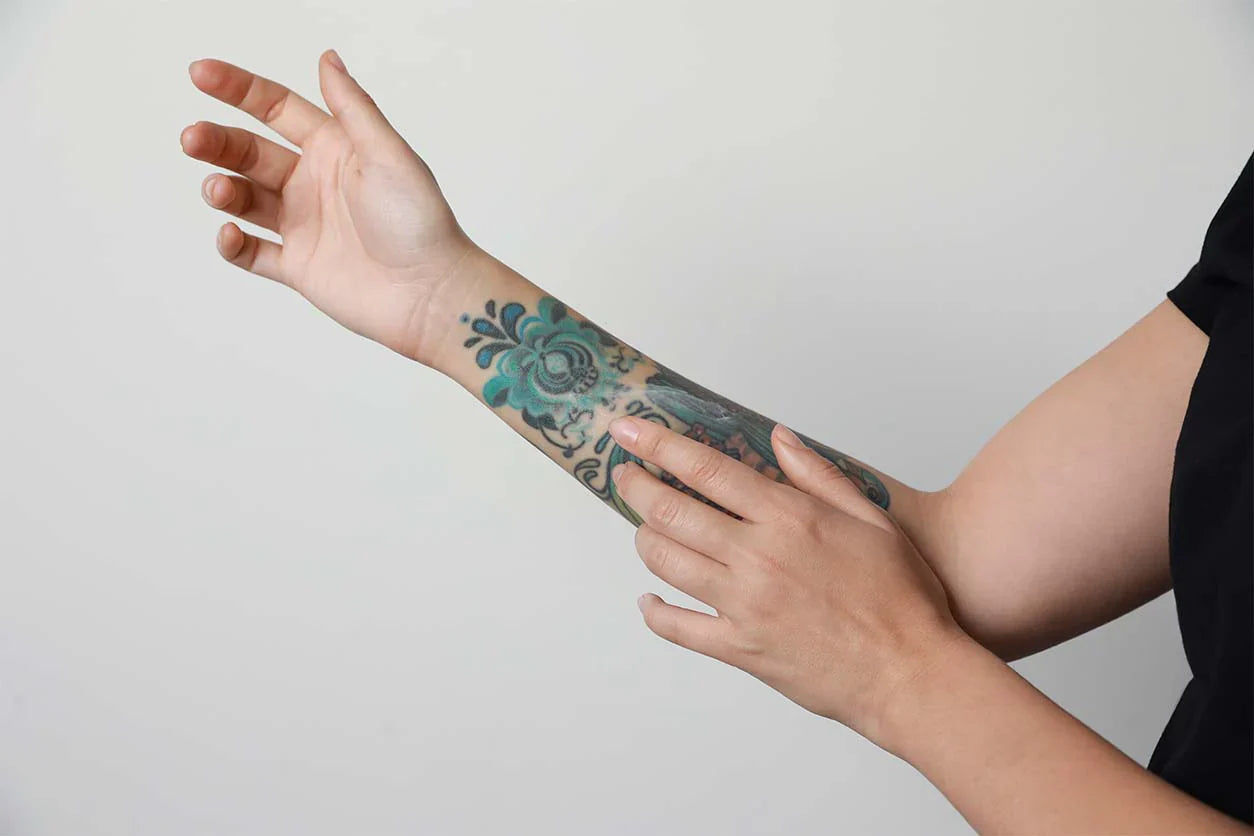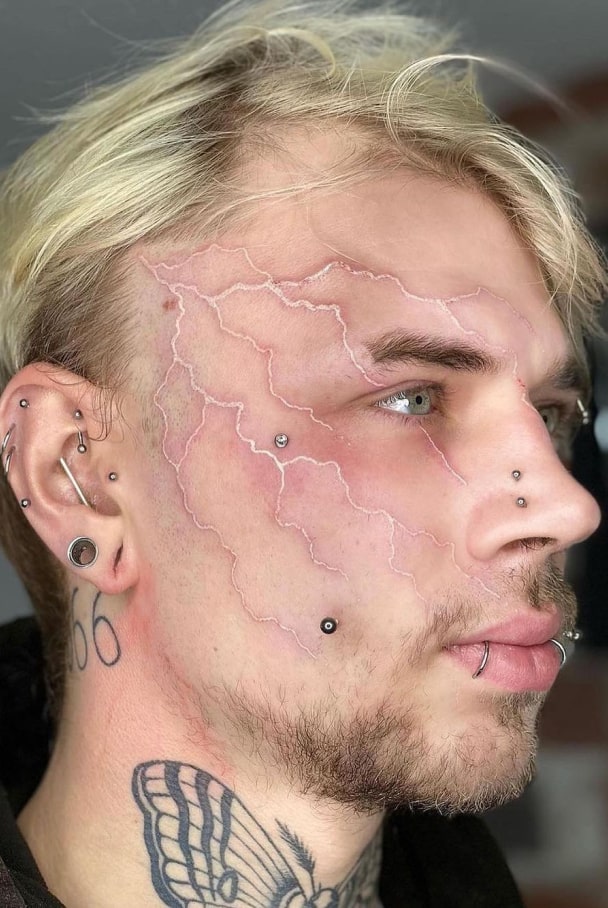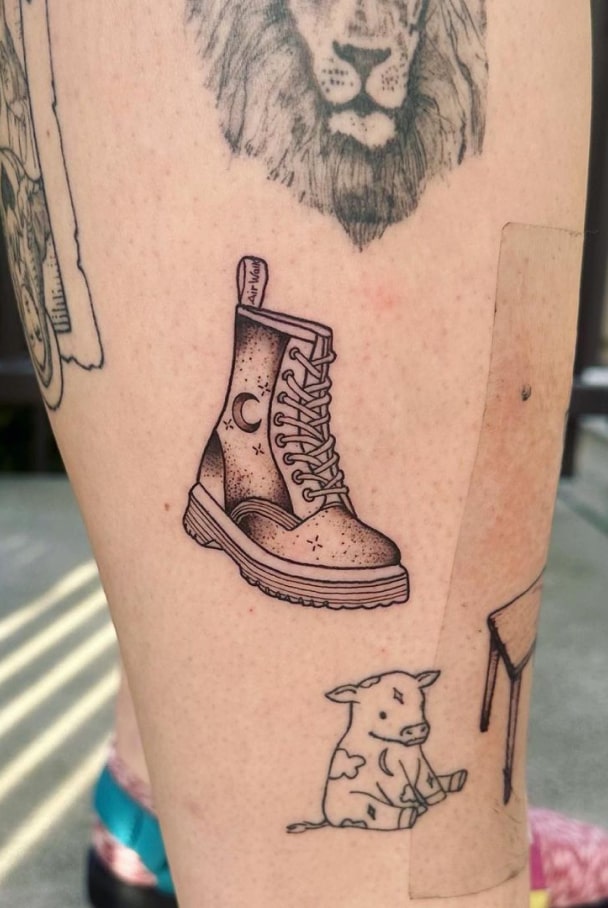Weight loss can have a significant impact on various aspects of our lives, and tattoos are no exception. If you've been wondering how weight loss affects your body art, this article will shed light on what happens to tattoos when you lose weight and why.
Will Losing Weight Mess Up a Tattoo?
When it comes to losing weight, tattoos are something you need to think about. The impact of weight loss on tattoos is a concern for many who have body art or are considering getting a tattoo while on their weight loss journey. Several factors contribute to how weight loss might affect tattoos, including the amount of weight lost, the location of the tattoo, and the individual's skin elasticity. Here's a more in-depth look at how weight gain affects tattoos:
Amount of Weight Lost
The extent of weight loss plays a significant role in determining the effect on tattoos. Minimal weight fluctuations typically don't cause noticeable changes to the appearance of tattoos. However, losing a large amount of weight or rapid weight loss may lead to tattoo distortion, stretching, or sagging.
Location of the Tattoo
The placement of the tattoo on the body is another crucial factor in determining how weight loss will affect its appearance. Tattoos located in areas prone to stretching or shrinking due to weight loss are more susceptible to distortion.
- High-Impact Areas: Tattoos placed on areas that tend to stretch or shrink with weight loss, such as the belly, upper arms, thighs, and breasts, are more likely to be affected by significant weight loss. These areas often experience the most change during weight fluctuations.
- Low-Impact Areas: Tattoos on parts of the body that are less affected by weight loss, such as the lower legs, upper back, or upper torso, might experience fewer changes in appearance. These areas typically have less fat and are less prone to stretching or shrinking during weight fluctuations.
Skin Elasticity
Skin elasticity, or the ability of the skin to retain its shape after being stretched or compressed, plays a crucial role in how tattoos look after weight loss. Factors affecting skin elasticity include age, genetics, sun exposure, and overall skin health.
- Good Skin Elasticity: Individuals with good skin elasticity may experience fewer changes in their tattoo appearance after weight loss. Their skin is better able to adapt to the body's changing shape and size, reducing the risk of tattoo distortion.
- Poor Skin Elasticity: Those with poor skin elasticity may find that their tattoos are more prone to distortion, stretching, or sagging after significant weight loss. The skin may struggle to retain its shape, leading to a greater impact on the tattoo's appearance.
What Happens to Tattoos When You Gain Weight?
Similar to losing weight, gaining weight can also affect tattoos. As the skin expands, tattoos might become distorted or develop stretch marks, altering their appearance. The extent of tattoo distortion depends on the amount of weight change, the tattoo's location, and skin elasticity.
Minimizing Tattoo Distortion During Weight Loss
If you're planning a significant weight loss journey or considering getting a tattoo while losing weight, here are some tips to minimize tattoo distortion:
- Choose the Right Location: Opt for body parts less susceptible to weight fluctuations, such as the lower legs, upper back, or upper torso.
- Select the Right Tattoo Design: Simple, abstract, or asymmetrical designs might be more forgiving when it comes to weight changes. Intricate and symmetrical designs can be more affected by skin stretching or sagging.
- Maintain a Healthy Lifestyle: Gradual weight loss, proper hydration, and a balanced diet can help maintain your skin's elasticity and minimize tattoo distortion.
- Consider the Timing: If possible, consider getting a tattoo after reaching your weight loss goal to ensure the most accurate and lasting tattoo design.
Should You Wait Until You Lose Weight To Get A Tattoo?
Tattoos and losing weight are not necessarily bad things, so deciding whether to wait until you lose weight to get a tattoo is a personal choice that depends on several factors. Here are some points to consider when making your decision:
- Location of the Tattoo: As mentioned previously, certain areas of the body are more prone to changes in appearance due to weight loss. If you're planning to get a tattoo on an area that might be significantly affected by weight loss, such as the abdomen, upper arms, thighs, or breasts, you may want to wait until you've reached your weight loss goal.
- Amount of Weight Loss: If you plan to lose a significant amount of weight, it's advisable to wait until you've reached your goal before getting a tattoo. This can help minimize the risk of tattoo distortion, stretching, or sagging due to skin changes.
- Skin Elasticity: Your skin's elasticity can influence how well your tattoo will adapt to changes in your body shape and size. If you have good skin elasticity, your tattoo may better withstand weight fluctuations. However, if your skin elasticity is poor, you might consider waiting until you've reached your weight loss goal.
- Weight Loss Timeline: If you're close to reaching your weight loss goal, waiting a little longer to get a tattoo might be a wise decision. However, if you have a long journey ahead or are unsure about your weight loss timeline, you may decide to get the tattoo sooner rather than later.
- Motivation and Personal Preference: Getting a tattoo can be a deeply personal decision, and you may find that a tattoo serves as motivation or a milestone during your weight loss journey. In such cases, you might decide to get the tattoo regardless of your current weight.
Ultimately, the decision to wait until you lose weight to get a tattoo is up to you. Consider the factors mentioned above and consult with a tattoo artist for personalized advice. Keep in mind that tattoos can be touched up or modified if needed, but it's essential to make an informed decision to minimize the potential for distortion or dissatisfaction with your body art.
Fixing Tattoo Distortion After Weight Loss
If you've experienced significant weight loss and your existing tattoo has been affected, it's important to address the changes to ensure you're happy with your body art. Here are some steps to consider when fixing tattoo distortion after weight loss:
- Consult with a Professional Tattoo Artist: Reach out to a reputable tattoo artist and explain your situation. They can assess the distortion and provide you with the best course of action to fix or modify your tattoo.
- Touch-ups: In some cases, minor distortions can be fixed with simple touch-ups. The tattoo artist may need to reapply ink, sharpen lines, or add more detail to the existing design to improve its appearance after weight loss.
- Reworking the Design: If the distortion is more significant, the tattoo artist may suggest reworking the design to better suit your new body shape. This can involve adjusting the size, shape, or proportions of the tattoo to create a more balanced and visually appealing result.
- Cover-Up Tattoo: In cases where the distortion is too severe, a cover-up tattoo might be the best option. The tattoo artist can create a new design that incorporates the existing tattoo or completely covers it. This allows you to have a fresh piece of body art that is tailored to your new body shape and size.
- Laser Tattoo Removal: If you're unhappy with the distorted tattoo and don't wish to have a cover-up or modified design, you may consider laser tattoo removal. This process can remove the ink from your skin, allowing you to start fresh with a new tattoo or leave the area ink-free.
- Skin Tightening Treatments: In some cases, loose or sagging skin after weight loss can contribute to tattoo distortion. Consulting with a dermatologist or plastic surgeon about non-invasive or surgical skin tightening treatments might help improve the appearance of your tattoo.
Remember that fixing a distorted tattoo after weight loss may take time and multiple sessions, depending on the severity of the distortion and the chosen solution. It's essential to have realistic expectations and work closely with your tattoo artist to achieve the best possible outcome for your body art.
Final Thoughts on Tattoos and Weight Loss
Weight loss can indeed impact tattoos, particularly in areas that are prone to stretching and sagging as the body changes. To minimize tattoo distortion and ensure that your body art remains looking its best, consider the following:
- Careful Location Selection: Opt for tattoo placements that are less likely to be affected by weight fluctuations, such as the upper back, lower legs, or wrists. These areas tend to be more stable and less prone to changes in size and shape.
- Thoughtful Design Choices: Choose tattoo designs that can adapt well to minor changes in size or shape. Symmetrical or abstract designs may fare better than intricate or highly detailed images, as they can be more forgiving when it comes to minor distortions.
- Maintain a Healthy Lifestyle: Adopting a balanced diet and regular exercise routine can help you manage your weight and maintain skin elasticity, both of which can contribute to the longevity of your tattoos. Staying well-hydrated and practicing good skincare can also help keep your tattoos looking vibrant and minimize distortion.
- Be Patient with Your Body Art Journey: If you're in the process of losing weight or planning significant weight loss, it may be wise to wait until you've reached your goal weight before getting a tattoo. This can help reduce the risk of tattoo distortion as your body changes.
- Consult with Your Tattoo Artist: If your tattoo has been affected by weight loss or gain, don't hesitate to consult with your tattoo artist. They can provide guidance on the best course of action to restore or modify your body art, ensuring that you're happy with the end result.
All in all, tattoos and losing weight are both very personal journeys and understanding the potential impact of weight loss on tattoos is crucial for making informed decisions about your body art. By taking the necessary precautions and working closely with a skilled tattoo artist, you can enjoy beautiful, lasting tattoos that continue to look great even as your body changes.
Please feel free to read our popular articles on tattoos like how to tell if your tattoo is healed, minimize tattoo pain, do tattoo artists use numbing cream, whether is it worth spending on tattoo numbing cream, preparing for tattoo, look after tattoo, deal with tattoo pain, how to overcome fear of needles and injections, how long tattoo lasts, cost of tattoo and many more








